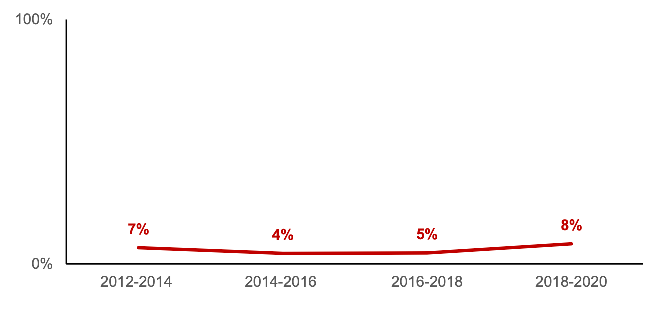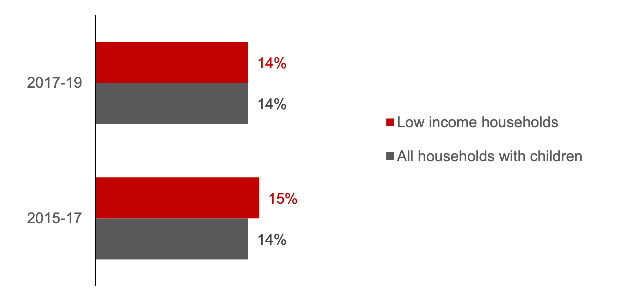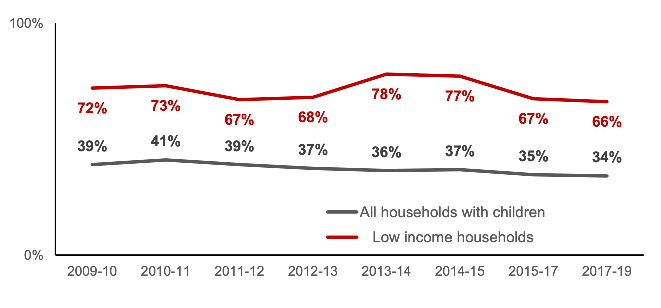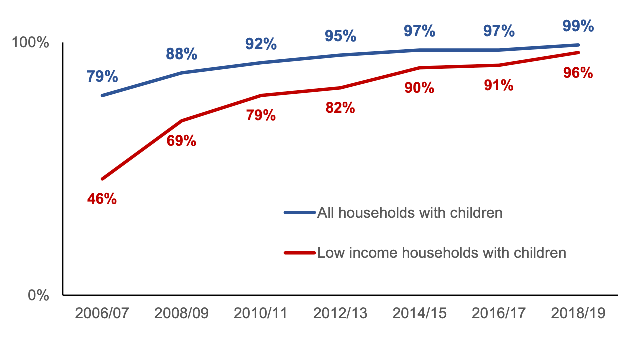Tackling child poverty - fourth year progress report 2021 to 2022: annex A - measurement framework
Measurement framework with the latest data on the drivers of child poverty. The 23 indicators in the child poverty measurement framework are intended to monitor these drivers of poverty. They form part of a wider monitoring and evaluation strategy.
Driver: Debt
Indicator 15: Unmanageable debt
Percentage of households with children in unmanageable debt.[5]

How this indicator relates to the child poverty targets:
- Relative poverty
- Absolute poverty
- Low income + material deprivation √
- Persistent poverty
Debt repayments are not deducted from income for the purposes of determining whether a household is in income poverty. They do, however, reduce the amount of disposable income that households with children have to spend on goods and services, and therefore increase their risk of material deprivation.
Indicator 16: Access to affordable credit
Percentage of low income households (bottom three income deciles) with children that have used high cost credit in the past 12 months.[6]

How this indicator relates to the child poverty targets:
- Relative poverty
- Absolute poverty
- Low income + material deprivation √
- Persistent poverty
Access to affordable credit can protect against problem debt and material deprivation. It acts as a buffer against unexpected costs (e.g. replacing a broken washing machine) and fluctuations in income.
Indicator 17: No Savings
Percentage of low income households (bottom three income deciles) with children that have no savings. Figures for all households with children are also provided for context.

How this indicator relates to the child poverty targets:
- Relative poverty
- Absolute poverty
- Low income + material deprivation √
- Persistent poverty
Savings protect against problem debt and material deprivation. They act as a buffer against unexpected costs (e.g. replacing a broken washing machine) and fluctuations in income.
Indicator 18: Internet Access
Percentage of low income households (bottom three income deciles) with children that have home internet access. Figures for all households with children are also provided for context.

How this indicator relates to the child poverty targets:
- Relative poverty √
- Absolute poverty √
- Low income + material deprivation √
- Persistent poverty √
Access to the internet allows opportunities to find lower-cost financial products and services, online banking, price comparison sites and online deals. Internet access and digital literacy also increase people's chances of accessing jobs and getting the benefits they are entitled to.
Contact
Email: tcpu@gov.scot
There is a problem
Thanks for your feedback